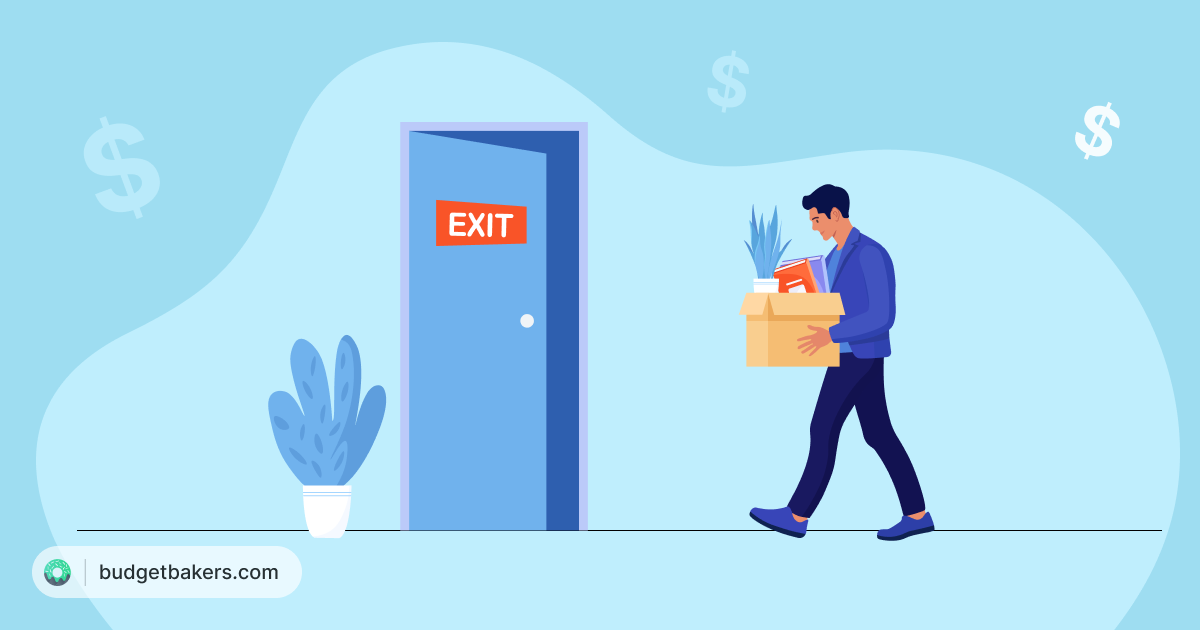Maintaining a sensible budget is about more than just limiting your spending. After all, there will be times in your life when you’ll be able to spend more and save money easily, just as there will be times when saving will be a struggle every month. In a way, your money habits are no different from your eating habits, or your regimen of physical activity. If you develop positive lifelong financial habits that work for you in fat years and lean years, then keeping to a budget will be as easy as tying your own shoes.
The object is not just to save money, but to actually enjoy your life, regardless of how much you’re able to earn, save, or spend at any particular time.
The Planner and the Doer
- Each person is divided between two selves: the “farsighted planner,” and the “myopic doer.”
- Balancing the selves is essential to financial health
- Present bias is the tendency to focus on the here and now, but overcoming present bias means choosing a sustainable amount of sacrifice in order to create a better future
The field of behavioral economics offers theories that help explain how human beings plan and act on their financial needs and wishes.
In their landmark paper, An Economic Theory of Self Control, published in Journal of Political Economy in 1981, Richard Thaler and H.M. Shefrin proposed that when it comes to financial planning, each person is divided into two distinct selves. These are the “farsighted planner” and the “myopic doer.” The authors drew parallels between the way individuals manage their own financial planning, and the discipline that business owners use to ensure that their employees act in their interests.
For example, Thaler and Shefrin pointed out that many positive financial habits had their roots in limiting the future self from making rash economic decisions. By “locking in” certain positive decisions, we save ourselves from later hardships that would be far worse than the short term sacrifices necessary to achieve our goals.
The phenomenon of “present bias,” or the tendency to focus on how things are right now, can lead to poor long-term financial decisions, such as borrowing more money than one can reasonably afford to pay back, or failing to purchase enough disability or life insurance because one cannot imagine a scenario in which their ability to work is reduced in the future. Insurance companies thrive on the fact that people generally wait too long to acquire adequate coverage, charging them far more than they would have when the customer was younger and healthier.
The Right Kind of Pain
An example of locking in a positive decision would be putting money into pension accounts or long-term annuities that are not able to be liquidated easily, but which pay out a relatively low rate of interest. Another would be buying life insurance at an early age – typically before the age of 30, when most people have yet to marry and have children. By making decisions that limit one’s own immediate financial freedom, one can ensure that their future is more financially stable and secure. It may require pain in the present to achieve a long-term goal, but that pain is often worth it.
Thaler and Shefrin argued that any financial advice that is not tailored to the individual’s personality and needs is unlikely to work, but that discomfort might be critical to success.
Seeking a little pain and deprivation can be healthy for a particular kind of person. It is easy to convince a risk-averse person to buy life insurance in their 20s. But it’s far harder to convince a risk-taking person to do the same. Ironically, it will be the more risk-averse person who is less likely to need life insurance than the risk-taker. Insurance companies know this, of course, and count on it. If you’re the kind of person who would find it painful to give up 5% of your income to get yourself comprehensive life insurance, then that may be just the right decision for you.
As has been our experience at BudgetBakers for over 10 years, people adapt any system of control to allow them a degree of freedom that they are comfortable with. Your goal ought to be to find that unique balance for yourself, and not to try to fit your personality and needs into someone else’s pre-baked solution.
Budgeting as Self-Control
- Underspending is as dangerous to your financial well-being as overspending
- Setting up reward mechanisms for positive behaviors can improve your long-term financial health
- Money as a means of “total self-control” will often backfire
It’s important to note that the internal conflict between the planner and the doer is not meant to be a constant losing battle on the part of the present self. Healthy financial habits account for the fact that you have real and important needs today. This is why allowing yourself to spend money is as much a part of financial discipline as forcing yourself to save.
The Right Amount of Pleasure
Simone Galperti, writing in Theoretical Economics, proposed the idea that targeting a realistic spending goal was as essential to financial stability as committing to a plan to save money. Galperti points out that individuals who target a minimum savings goal and then allow themselves to spend excess income beyond that goal have more success long-term in budgeting, than those who simply designate an unrealistically high savings goal.
Just as there is a right amount of pain, there is also a right amount of pleasure when it comes to money. If money is never a source of happiness, then it can only ever be a source of unhappiness.
This is at least partly because the cognitive burden of constantly reminding oneself to save money can degrade long-term decision making, resulting in worse short term decisions, and a tendency to abandon long term goals. Essentially: if you set your sights too high, you’re more likely to fail and end up further from your goal than if you had set your sights somewhere achievable.
We can see the same effect in other areas of personal accountability, such as weight loss or smoking reduction. Quitting sweets or smoking “cold turkey” has a somewhat lower rate of success than limiting these behaviors over time. While a certain percentage of people have the motivation to succeed according to a drastic reduction of the negative behaviors, most will fail to meet their goals, and are more likely to give up on them entirely as a result.
This interplay between money and self-control makes budgeting a common means of altering one’s personal habits. Smoking, for example, is very expensive, so the act of saving the money one might spend on smoking can help curb the behavior, and allow the person to set up a self-reward mechanism. The money saved per month on tobacco can be put toward other, more healthy endeavors, like a holiday trip, or a new hobby.
As Galperti points out however, attempting to use budgeting as a means of “total” self-control can backfire. It’s important to set a minimum-savings rule, but not to force oneself to save an unsustainable amount of money. Financial incentives can alter behavior, but it’s best to allow one’s behavior to change slowly over time, and to try to focus on one change at a time.
The Danger of Under-Spending
The issue of “underconsumption” is more prevalent than one might suppose, based on most financial habit blogs. Writing in the Chicago Journals, Heath and Soll wrote in Mental Budgeting and Consumer Decisions, that because certain types of spending are easier to categorize than others, there is a tendency amongst consumers to under-consume in certain categories of spending.
The theory, essentially, is that if I set a monthly budget for “entertainment” at, say, $100, I’m more likely to spend that $100 on small items that are easily consumed but have little long-term impact on my mental well-being, while avoiding activities that cost more than $100, but might have a much more positive long term impact. Thus Heath and Soll propose that some amount of flexibility is critical to budgeting. Particularly, the flexibility to move money from one mental category to another, in order to achieve the most ideal outcome both from a financial and a well-being perspective.
If one’s spending on, say, gasoline is lower than expected, then one should have the mental confidence to move the remainder to an area that is lacking, such as car maintenance, rather than simply banking the extra money as “savings” in every case. Regardless of what you decide, it’s critical to re-examine your budget from both a long and short term perspective. Circumstances change, so your budget cannot be written in stone.
Research like this is critical to the way Wallet by BudgetBakers is designed, with the ability to shift money from one spending category to another, and adjust the sizes of individual budgets on the fly. Because individuals must constantly balance their long-term goals with their immediate needs and wants, some amount of flexibility is key to success at budgeting wisely.
Identifying Harmful Habits
- Habits are “loops” containing three parts: a cue, a routine, and a reward.
- Even negative habits and addictions have positive rewards, which is why eliminating them is difficult
- Sometimes the positive rewards of a negative habit outweigh its dangers
Behavioral economists commonly refer to habits as occurring in “loops,” with three distinct features: a “cue,” a “routine,” and a “reward.”
The “cue,” often referred to as a “trigger,” is the event which begins the behavioral loop. For example: a smoker gets off a bus after a long trip, and sees a smoking area. The “routine” is what surrounds the activity itself, including preparing to do the habit (searching for a lighter, or smelling a cigarette before lighting it). Finally the “reward,” is the effect that the activity has on the body and mind.
Balancing Negative Habits with Their Benefits
Interestingly, extensive research of addictive behaviors has shown that people begin to experience “reward” feelings often before the habit itself has been fully carried out. A smoker begins to feel better while they are pulling out those cigarettes, for example. Someone who derives pleasure from shopping begins to feel the reward before arriving at the store. This shows that the cue and routine aspects of habit formation are equally important to the reward mechanism. A smoker may get a kick from nicotine… but they also get something from the act of preparing to smoke.
Nevertheless, bad habits need not be entirely negative – even the ones that are nominally “unhealthy.” Economics writer Malcolm Gladwell argued in his book The Tipping Point, that the value of a negative habit can, for certain people, seem to outweigh the positive benefits of quitting that habit. Gladwell used the example of someone who smokes in moderation as a social activity. He argued that harm reduction would, in many cases, be preferable to a policy of total self-denial.
We can see this same effect forming around any given habit, good or bad. Someone addicted to exercise may also find that their gym provides them with a much needed sense of community. Someone with the negative habit of procrastination may find that the pressure of a deadline enhances their productivity. Someone with an unhealthy addiction to running may find that it quiets the symptoms of ADHD. The question then becomes one of balancing the harm of the negative habit with the benefits it provides.
For example, a smoker may be doing damage to their body by smoking a cigarette, but they may also be fulfilling a routine that reduces stress or focuses the mind – one of the reasons lawmakers have recently sought to reduce the amount of nicotine available in cigarettes, rather than to eliminate smoking entirely. Others argue that replacing this dangerous habit with a still-addictive, but less deadly addiction, such as vaping, is the best way to reduce harm.
None of this should be read as an encouragement of addictive or unhealthy behavior. However, one thing remains clear: every habit fulfills a purpose for the person who forms that habit, and that purpose may be worth the cost of continuing that habit in some instances. It’s never enough to tell someone not to do something they do for a valid reason. The reasons why you do something need always to be considered and addressed.
Next Time: Forming Healthy Habits
We’ve talked about the need for balance between harm and reward when approaching habit formation. But how do we actually form productive financial habits? In the next entry in this series, we’ll dive into positive habit formation, and provide a series of actionable steps you can take to improve your financial health, while reducing the harm that some of your negative habits may be causing.
At BudgetBakers, our philosophy is not to dictate how you manage your money or your life, but to provide you with information and tools which can help you form positive habits that will last a lifetime.
You can begin tracking your spending and seeing the bigger picture when it comes to your personal finances, with Wallet by BudgetBakers: the world’s only privacy-first, global personal finance tracker that adapts to your individual needs.


